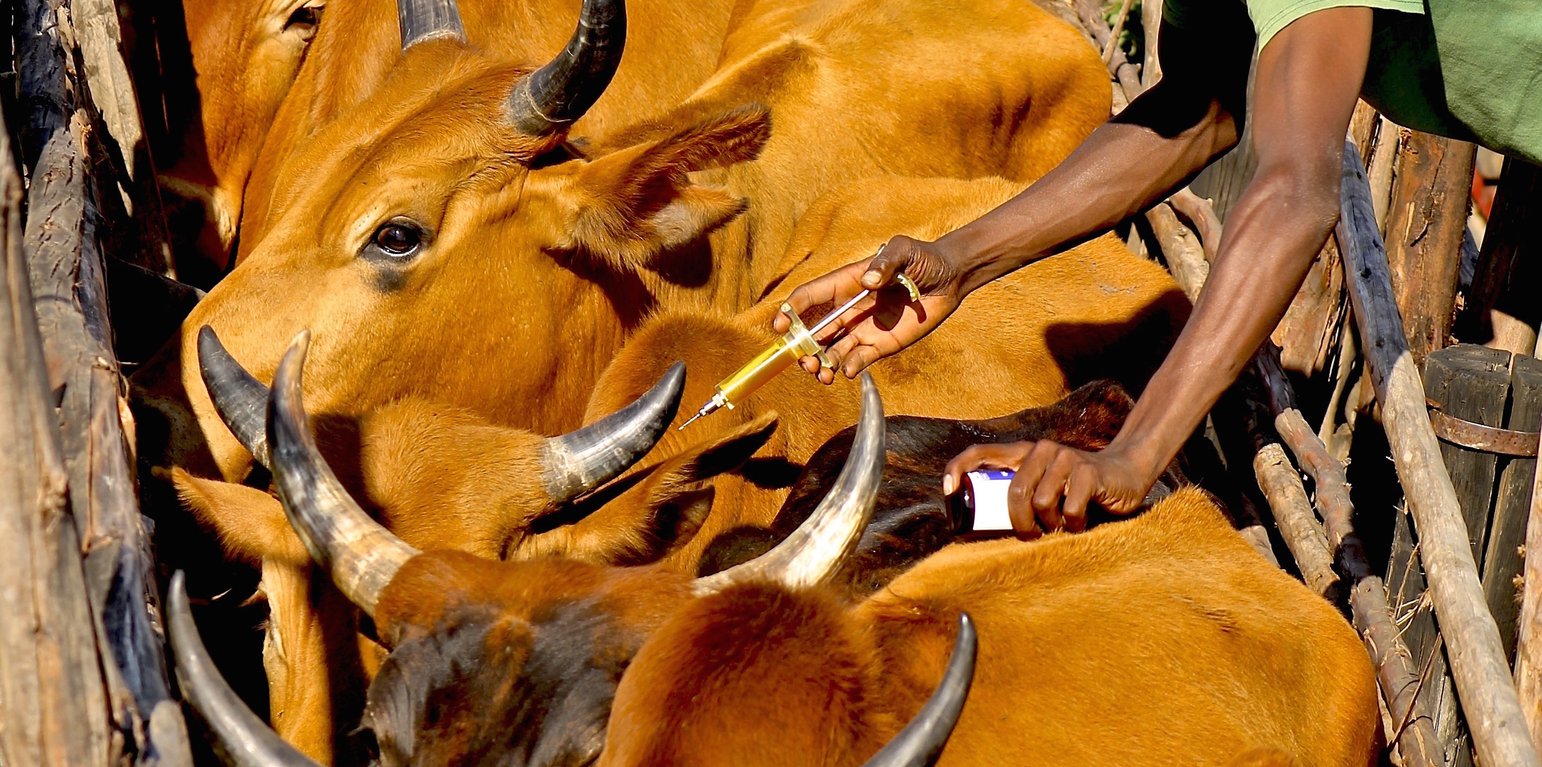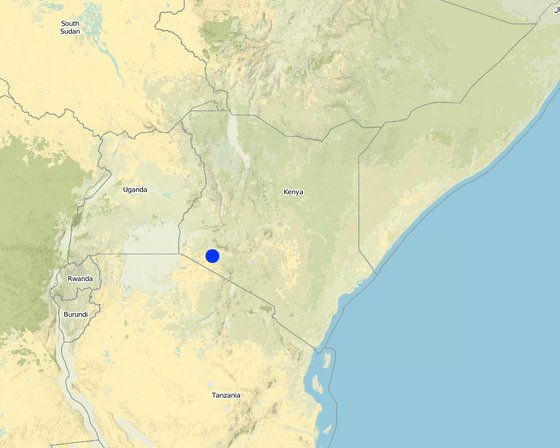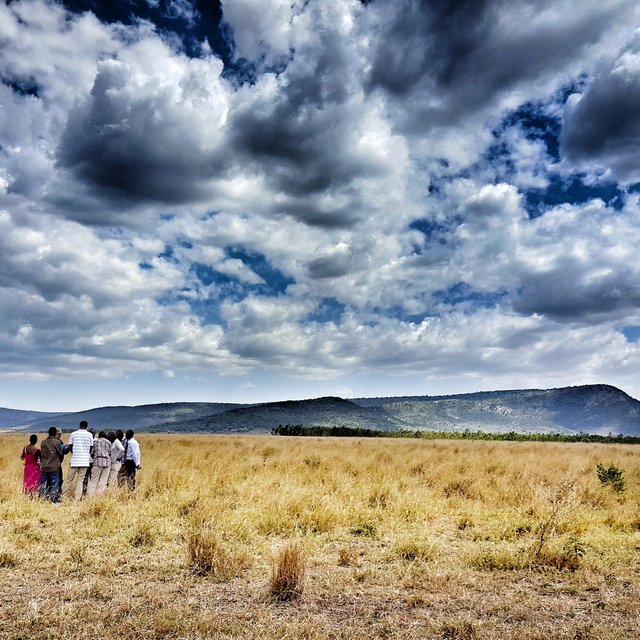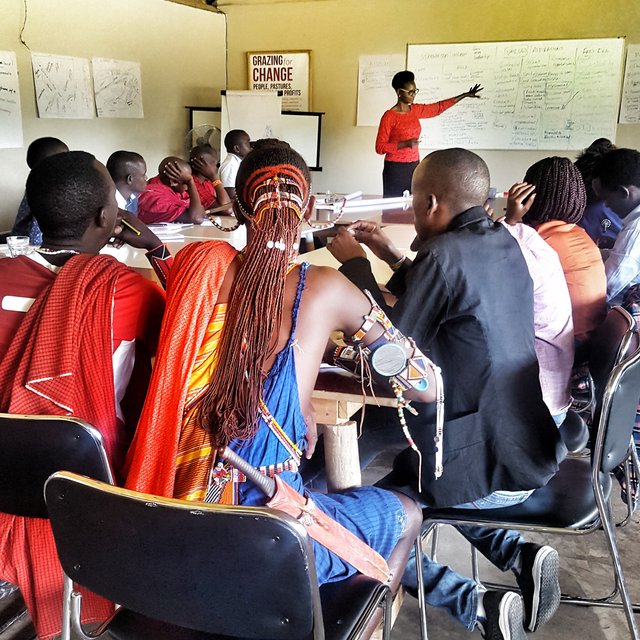



Mara Beef is a limited company that raises top quality beef on the edge of the Maasai Mara, Kenya. The Mara Beef company uses their own private land - Naretoi farm - as well as partnering with the Enonkishu Conservancy, to introduce high quality beef breeds to local herds, and sell the beef onto high end supermarkets and restaurants through their own abattoir. There is a large gap in the prime beef market in Kenya, and Mara Beef is trying to fill this gap. Other cuts, not prime cuts, are sold to other less expensive restaurants. The beef is slaughtered and butchered on site. Mara Beef is engaged in many facets of improved rangeland management; the management of Enonkishu Conservancy and Naretoi farms; through the Mara Training Centre, a training hub for rangeland management; and using the Mara Beef network to link pastoral communities with higher value market.
The Enokishu Conservancy is a conservancy created on the edge of the Maasai Mara ecosystem, and is registered under the Maasai Mara Wildlife Conservancies association. The conservancy is 6,000 acres in size, and is owned by 34 landowners who are Maasai pastoralists. Mara Beef has worked with the conservancy to develop a grazing plan for the conservancy. This plan encourages seasonal rotational grazing that allows grasslands to be heavily grazed for short periods, and allowed to recover over long periods. Conflict between predators and cattle is minimised through the use of mobile bomas (enclousers), to protect cattle at night. Integrating wildlife and livestock management into this conservancy aims to i) provide financial benefits through livestock sales from community cattle to build resilience to stochastic events, such as droughts; ii) to increase food security through supplementary income generation; iii) establish sustainable livestock production, to reduce rangeland degradation in an effort to restore and protect ecosystem functioning. This includes the improvement of soils, watershed protection, carbon sequestration and biodiversity conservation. The conservancy pays each land owner to use the land for cattle fattening, and the average land rent paid to each landowner per year is $20 per acre, spending roughly $119,680 per year. Community members also receive conservancy fees from tourists visiting the area.
The Mara Training Centre was established within the Enonkishu training centre to work with communities to help them create and manage the future they desire. The programs build on three principles: building social participation, governance and participation; creating locally implemented and led planned grazing; and stimulating growth in livestock and wildlife based enterprises. The centre runs a variety of training courses including: boot-camps on rangeland management; extension services; and ecological monitoring.
Finally Mara Beef also provides market linkages for the broader pastoral community to premium beef markets. This service lets pastoral communities from across the region to sell beef at a guaranteed price based on both weight and grade at the animals. This price is often significantly higher, on average around $50, than any price offered by local markets, and the lower transport costs and less weight loss on transport also benefit the seller. The emphasis on high quality beef, with high weight requirements, should have a broader affect on pastoral communities, encouraging improved rangeland management for improved livestock productivity. Although this process will be slow. Mara Beef, for example, was granted a loan from the Agricultural Finance Corporation in January 2017 to purchase malnourished cattle during the drought - where Mara Beef bought 1000 animals from105 individuals at an average of $250 per cow.

ទីតាំង: Maasai Mara, Narok, ប្រទេសកេនយ៉ា
កាលបរិច្ឆេទចាប់ផ្តើម: 2013
ឆ្នាំបញ្ចប់: មិនមាន
ប្រភេទនៃវិធីសាស្ត្រផ្សព្វផ្សាយ

| តើមានភាគីពាក់ព័ន្ធ/ភ្នាក់ងារអនុវត្តន៍ណាខ្លះដែលបានចូលរួមក្នុងវិធីសាស្ត្រផ្សព្វផ្សាយ? | សូមបញ្ជាក់ភាគីពាក់ព័ន្ធ | សូមពណ៌នាតួនាទីរបស់ភាគីពាក់ព័ន្ធ |
| អ្នកប្រើប្រាស់ដីក្នុងតំបន់/សហគមន៍ | 33 landowning families established the Enonkishu Conservancy | They are the landowners and receive benefits from land rents provided by the conservancy. They receive benefits from sale of Enonkishu cattle to Mara Beef, receiving financial returns on the investment. They also receive benefits of conservancy fees from visiting tourists. |
| អ្នកឯកទេសគ្រប់គ្រងដីប្រកបដោយចីរភាព/ទីប្រឹក្សាបច្ចេកទេសកសិកម្ម | Savory Insitute | Act as advisers for the Mara Training Centre programs. |
| អង្គការក្រៅរដ្ឋាភិបាល | Maasai Mara Wildlife Conservancies Association | Acts as the umbrella body for wildlife conservancies in the region, including Enonkishu. They are also responsible for encouraging sustainable rangeland management practices and livestock production within the Mara conservancies. |
| អង្គការអន្តរជាតិ | African Enterprise Challange Fund (AECF) | Provided funding for the establishment of the conservancy; construction of the mara training centre; and the improvement of the slaughterhouse. |
ការសម្រេចចិត្តត្រូវបានធ្វើដោយ
ការសម្រេចចិត្តត្រូវបានធ្វើដោយផ្អែកលើ៖
Grant from AECF
Grant from AECF
កំលាំងពលកម្មដោយអ្នកប្រើប្រាស់ដីគឺ
The approach established the Enonkishu conservancy, providing them with a platform for better land management, conservation and revenue generation.
The approach provides training and outreach through the Mara Training Centre
The approach improved access for funding to the Enonkishu conservation area.
Over 600 pastoralists trained in rangeland management and livestock production in the first 6 months of the establishment of the Mara Training Centre.
Mara Beef organised a conference in Nariobi, called Grazing for Change, with other 300 delegates debating the role of livestock production in conservation and development.
The approach established the Enonkishu conservancy, and its links with Mara Beef.
In 2017 Mara Beef provided an estimated benefit of $103,600 to livestock owners (estimated at at a $50 increase in value per cattle sold to Mara Beef as opposed to other markets). In 2017 Mara Beef also bought cattle from an Agricultural Finance Corporation drought contingency fund. Mara Beef bought 1000 animals off 105 farmers at an average of $250 each cow. These cattle would have certainly died due to lack of food. Therefore, a net Benefit of $ 250 per (cow) multiplied by 1000 cows spread over 105 farmers. So, a net benefit of $250,000 divided by 105 farmers. $2380 for 105 farmers